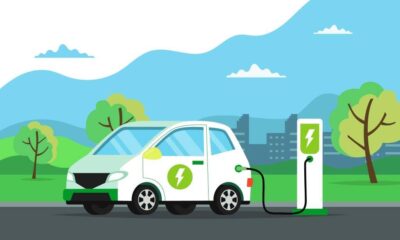

Environment
Lower Your Carbon Footprint by Minimizing Heat Transfer Through Your Floors
This January has been one of the coldest on record in many parts of the Northeast. In the short term, this means that our heating bills are going to rise sharply. However, there are much more longer-term consequences for the environment. When we need to use a lot of heat to stay warm during historically cold winters, we are producing a lot of excessive carbon emissions. This can expedite climate change more quickly than we anticipated. This a circular problem, since climate change also means winters are colder.
If you are really serious about slowing the progression of climate change, then you need to make sure your home is as energy efficient as possible. This means that you need to insulate every facet of your home to minimize unnecessary heat loss. Unfortunately, most people invest all of their resources minimizing heat loss through their walls and windows. They often neglect to prevent excess heat from escaping through their floors.
Preventing heat loss through your floors is more important than you think
I recently talked to my friends that just bought their first home. They have been insulating it for a couple of months to help them get through the winter without having to pay massive heating bills. Almost all of their efforts have been focused on insulating their walls.
That was until they spoke with my brother. He talked about the huge heating bills he had the previous year. This year, he invested in insulating his floors, which had no insulation whatsoever before. His heating bills dropped sharply as a result.
Most people seriously underestimate the cost of heat loss through their floors. Your floors account for around 10% of all heat loss in your home. Since heating is responsible for 53% of our total energy use, this means that you can reduce energy consumption by nearly 3% by cutting heat loss through your floors by 50%. This will make a noticeable impact on your heating bill during the brutal winter that we are going through. It will also help you reduce your home’s carbon footprint.
The good news is that there are plenty of things that you can do to prevent unnecessary heat loss through your floors. This will lower your monthly energy costs and help the environment at the same time. Here are some tips that will help.
Use a cripple wall to provide insulation
You don’t just want to add insulation below your floorboards. You also need to make sure that there is insulation near the short walls a joining your floorboards. The easiest way to do this is by creating a “cripple wall” by conjoining your short wall with panels of plywood. Then you will need to add insulation between each of the floor joists. This is a much more energy efficient option than merely insulating the walls or adding insulation several feet below the floorboards.
Make sure that you choose the right materials
The materials you used to make your floors will have a strong impact on heat loss. Every material has its own unique heat loss coefficient. You need to look for materials that are good at retaining heat.
One material that most people don’t consider is natural stone or ceramic tiles. These are often cold on our feet, so you probably think that they are terrible for heat loss. However, they can actually be a great option when they are also paired with other materials immediately beneath them. They are great for stopping drafts from skipping through the floor, so if you put them on top of and other material with a low heat conductivity ratio, then you will significantly reduce heat loss.
Vinyl and laminate are also options that you should consider. Although they are not exceptional at preventing heat loss, they are much better than metal or standard wood. However, engineered wood floors can be one of the best options of all, since they are carefully treated to have the ideal thermal properties.
Use carpet with thick threads
Adding the right type of carpeting can significantly reduce heat loss. The great thing about carpeting is that it is very easy to use. It’s not meticulously expensive and you don’t need to spend hours installing it.


 Environment10 months ago
Environment10 months agoAre Polymer Banknotes: an Eco-Friendly Trend or a Groundswell?

 Environment12 months ago
Environment12 months agoEco-Friendly Home Improvements: Top 7 Upgrades for 2025

 Features9 months ago
Features9 months agoEco-Friendly Cryptocurrencies: Sustainable Investment Choices

 Features10 months ago
Features10 months agoEco-Friendly Crypto Traders Must Find the Right Exchange





























